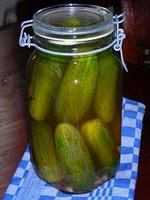'... unpretentious in the extreme, not to say unequivocally basic (...) Only the boldest, the poorest or the most ignorant would seek shelter and sustenance here. (...) Forget pubs, he reasoned, this was where the country's true and ancient culinary heritage resided; only in these uncompromising estaminets would you find the quintessence of a unique way of English life, fast disappearing.'
(Quoted from
Armadillo by William Boyd, p. 70-71)
If there is one thing in Boyd’s novel I'll never forget, it’s these thoughts of Lorimer Black, the novel’s protagonist, on a café across Old Kent Road, and his log called Classic British Caffs, in which he lists sorry places like this. But memory is a queer thing. I've been imitating Lorimer for several years now, but leafing through Armadillo, I realise imitating is hardly the word. In my list of Authentic Caffs I describe in a few short sentences various international ‘caffs’, in alphabetical order by country, town etc. They can be anything from simple diners to Michelin star rated restaurants, from beer gardens to wine growers. If they have one thing in common, it is a certain quality that appeals to me, something that makes them special, call it the X-factor.
I intend to publish these Authentic Caffs (by country or region) on this blog and keep them up to date for you. As this blog has no access to a database or content management system, I’ll link the postings to each other to improve their accessibility.
Some descriptions may seem curious, or difficult to understand if you’ve not visited the place yourself, but they should be telling enough in a way (after all, I only list those that seem commendable). Please be so kind as to correct me if you think I’m wrong.
Can’t wait to see what I mean? All right, the Belgian entries as an example, then.
AntwerpSnack a-Amir (restaurant)
Last visit: lunch in 2004. Address: Appelmentstr. 18, T 00(3)232329655Outstanding Lebanese in Jewish quarter featuring feasting Pakistani, Belgians and (partly fasting) Arabs. They serve wine too.
SippenaekenLe Barbeau (pub)
Last visit: 2003. Address: Near the churchCoffee and cake, in the evening good stews and a decent choice of Belgian beers. Almost perfect service. Often closed on weekdays.








